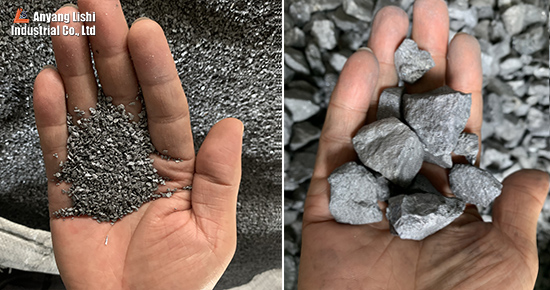Inoculants and nodulizers are both essential additives in the production of spheroidal graphite cast iron (ductile iron). They work together to achieve the desired microstructure and properties, but their core functions, mechanisms, compositions, and addition methods are fundamentally different.

Similarities
1. Same purpose: improving cast iron performance
Both aim to modify the microstructure of cast iron, transforming ordinary gray cast iron into high-performance ductile iron with superior mechanical properties.
2. Both are additives
They are added to molten iron in the form of alloys or compounds.
3. Precise dosage required
Too little or too much will reduce casting quality.
4. Process-sensitive
In addition, temperature, treatment method, and protective measures influence absorption and effectiveness.
5. Monitoring and control
Production requires metallographic testing and process control to confirm effectiveness.
Differences
|
Feature |
Nodulizer | Inoculant |
|
Addition stage |
Added during nodularization treatment: in ladle or via cored-wire feeding, the first step in ductile iron production. |
Added after nodularization: in ladle, flow-through, or in-mold before pouring. |
|
Dosage |
Lower: 0.1%–1.5% of molten iron weight, depending on Mg content, S level, and method. |
Higher: 0.2%–1.0% of molten iron weight, depending on wall thickness and inoculant type. |
|
Treatment temperature |
Higher: 1450°C–1550°C, to ensure complete Mg reaction. |
Lower: 1350°C–1450°C, excessive temperature accelerates inoculation fading. |
|
Key indicators |
Nodularity (>80% spheroidal graphite); residual Mg/RE in effective range. |
Graphite nodule count (many, fine, uniform); reduced chill depth; controlled ferrite/pearlite ratio; inoculation fading time. |
|
Effect on graphite |
Morphology: flake → spheroidal. |
Size & distribution: smaller, rounder, more uniform spheroids. |
|
Effect on matrix |
Indirect: via carbon activity and graphite morphology; high Mg/RE may promote carbides. |
Direct: promote carbide decomposition; stabilize or promote ferrite formation. |
|
Fading issue |
Anti-nodularization: insufficient residual Mg/RE leads to vermicular or irregular graphite. |
Inoculation fading: rapid loss of effect over time/temperature, causing coarse graphite and reduced properties. |
|
Typical products |
FeSiMg, Rare Earth Ferro Silicon Magnesium |
FeSi, CaSiBa, FeSiBa. |
Summary
Nodulizer determines whether graphite can be transformed from harmful flake into a beneficial spheroidal form. This is the foundation of ductile iron’s superior performance.
Inoculant fine-tunes the nodularized iron: ensuring spheroids are small, round, and evenly distributed, while also controlling the ferrite/pearlite matrix.
LSFerroalloy Advantage
At LSFerroalloy, we provide high-quality nodulizers and inoculants, tailored to customer needs:
Technical precision: Customized formulas for different ductile iron applications.
Stable quality: Controlled particle size, purity, and consistent reactivity.
Professional service: Technical support, third-party testing, and fast response.
LSFerroalloy — your trusted partner for spheroidal graphite cast iron solutions.
